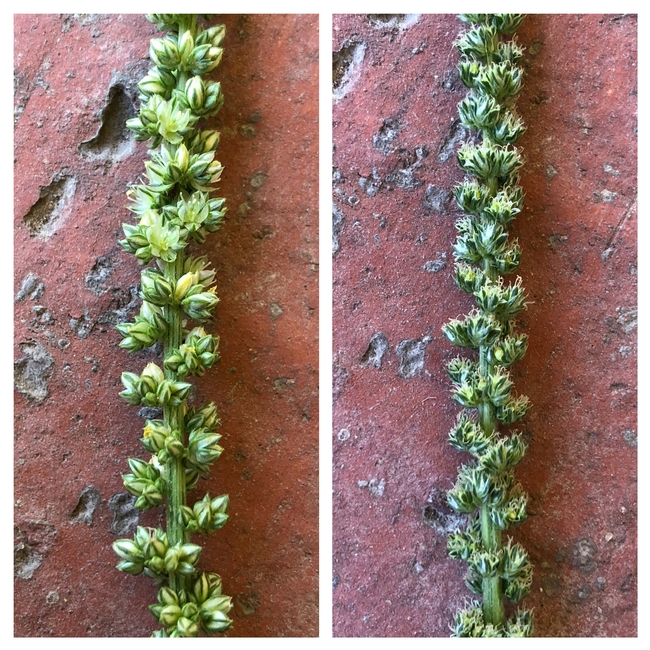Floral terminology: Perfect vs imperfect, monoecious vs dioecious
Perfect flowers: contain both male parts (stamens, the male fertilizing organ of a flower, typically consisting of a pollen-containing anther and a filament) and female parts (pistils, the female organs of a flower, comprising the stigma, style, and ovary) in the same flower.
Imperfect flowers: have either male parts (which are called staminate flowers), or female parts (which are called pistillate lowers), but not both. Imperfect flowers can be found on either the same plant (which is defined as being monoecious) or on separate plants (which is defined as being dioecious). Consequently, dioecious species have separate male and female plants.
Waterhemp (Amaranthus tuberculatus) produces male (left) and female (right) flowers on separate plants
